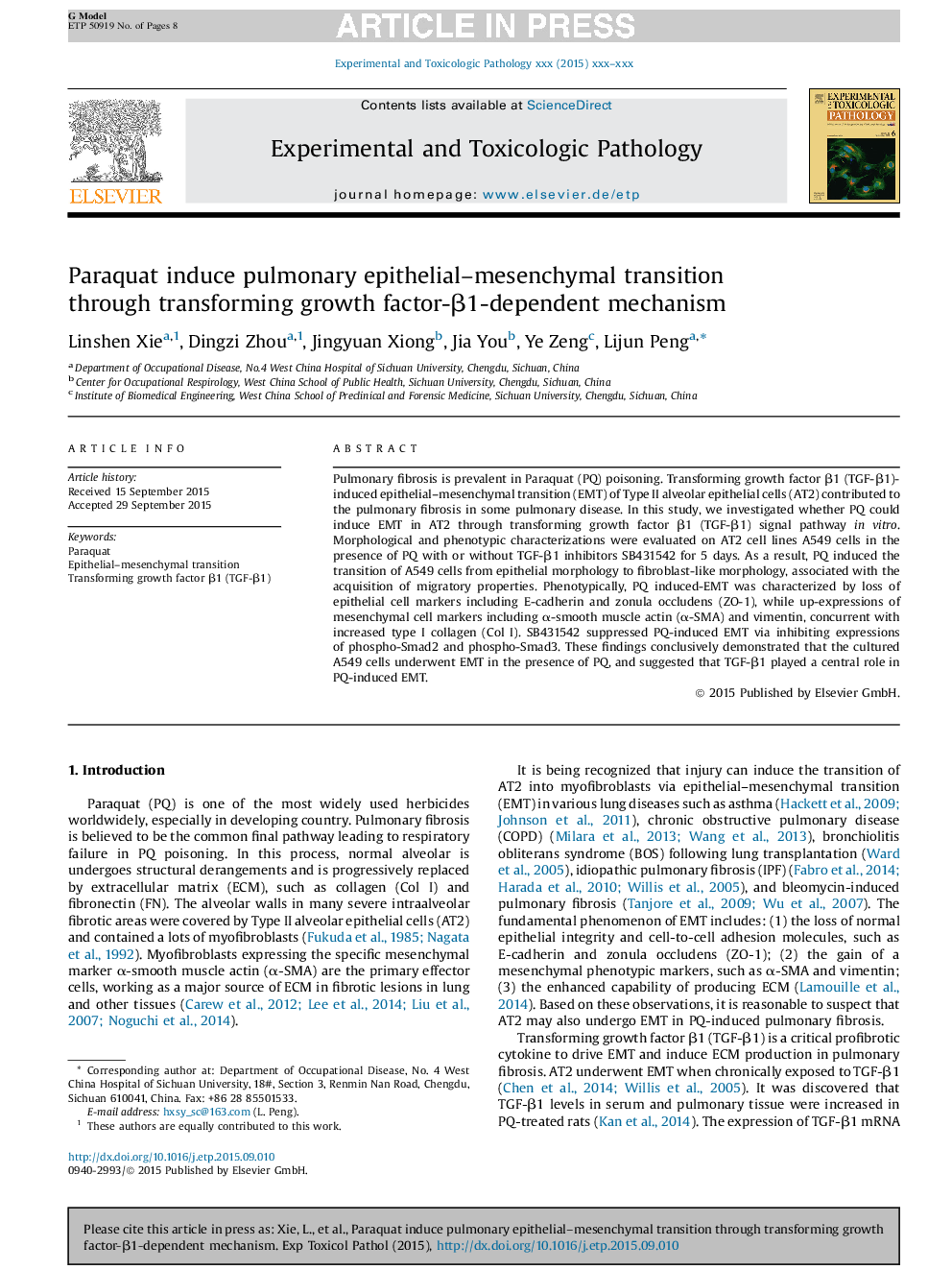| Article ID | Journal | Published Year | Pages | File Type |
|---|---|---|---|---|
| 5817080 | Experimental and Toxicologic Pathology | 2016 | 8 Pages |
Abstract
Pulmonary fibrosis is prevalent in Paraquat (PQ) poisoning. Transforming growth factor β1 (TGF-β1)-induced epithelial-mesenchymal transition (EMT) of Type II alveolar epithelial cells (AT2) contributed to the pulmonary fibrosis in some pulmonary disease. In this study, we investigated whether PQ could induce EMT in AT2 through transforming growth factor β1 (TGF-β1) signal pathway in vitro. Morphological and phenotypic characterizations were evaluated on AT2 cell lines A549 cells in the presence of PQ with or without TGF-β1 inhibitors SB431542 for 5 days. As a result, PQ induced the transition of A549 cells from epithelial morphology to fibroblast-like morphology, associated with the acquisition of migratory properties. Phenotypically, PQ induced-EMT was characterized by loss of epithelial cell markers including E-cadherin and zonula occludens (ZO-1), while up-expressions of mesenchymal cell markers including α-smooth muscle actin (α-SMA) and vimentin, concurrent with increased type I collagen (Col I). SB431542 suppressed PQ-induced EMT via inhibiting expressions of phospho-Smad2 and phospho-Smad3. These findings conclusively demonstrated that the cultured A549 cells underwent EMT in the presence of PQ, and suggested that TGF-β1 played a central role in PQ-induced EMT.
Related Topics
Life Sciences
Agricultural and Biological Sciences
Animal Science and Zoology
Authors
Linshen Xie, Dingzi Zhou, Jingyuan Xiong, Jia You, Ye Zeng, Lijun Peng,
